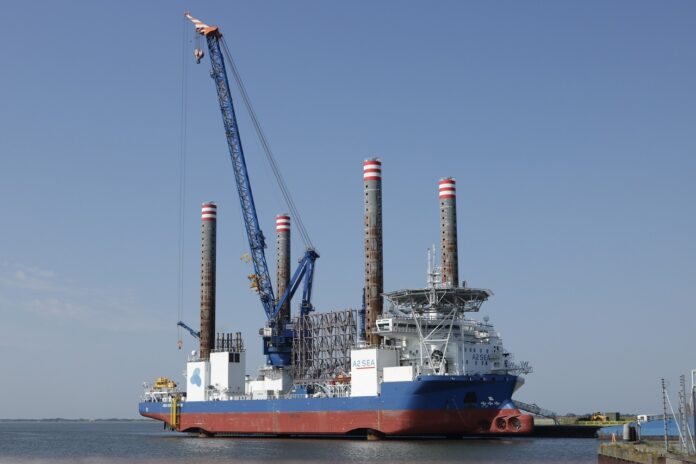The field of deep offshore technology is ever-evolving and is creating waves in the oil and gas industry. As oil companies venture deeper into the sea, more technical issues arise. However, innovation brings many solutions for improving safety and efficiency that are environmentally friendly. Implementation of innovation solutions makes offshore operations reliable and cost-effective. This article discusses the advancements in deep offshore technology with an emphasis on innovations that are key to its progress.
Enhanced Drilling
For starters, the drilling technique has changed significantly since the last quarter of the 20th century, when oil and gas drilling began in deeper waters with more technical challenges. Engineers today design ultra-deepwater drilling rigs to withstand extreme conditions of pressure and temperature. Unlike traditional platforms, modern drilling rigs use dynamic positioning systems to support their weight and resist any possible movement without the conventional use of anchors. Hence, the operators drill in places that were unreachable before.
Automated drilling control systems have fast and accurate drilling. Using parameters updated in real time, these automated systems are able to provide clarity and continuity of performance. Higher penetration efficiency is achieved by applying drill bits that are made of innovative materials that are superhard. This means quicker resource extraction with reduced wear and tear on the drilling equipment.
Lastly, extended-reach drilling enables the operators to access reserves situated very far from the rig location. Drilling horizontally over long distances maximizes production and lessens the environmental impact. As deep drilling is developed, heat-resistant materials and cooling systems will ensure uninterrupted operation without failure.
Strengthening Subsea Infrastructure
Beyond drilling advancements, subsea infrastructure maintains the vitality of offshore operations. Engineers put in place strong pipelines and risers that carry oil and gas safely to processing plants. Current alloys are resistant to corrosion and extremes of temperature and high-pressure conditions. Therefore, these structures enjoy a longer life span and face less wear and tear in terms of repair.
In the meantime, smart sensors embedded in the pipelines provide real-time data concerning flow rates, pressure, and structural integrity. In this way, operators know before leaks and weaknesses become significant failures. Maintenance teams act on instant alerts and thus minimize loss from downtime.
Also, modular subsea production systems add flexibility to deep-world operations. Instead of erecting large, fixed platforms, companies deploy small, adaptable processing units on the seabed. The units separate water, gas, and oil at source, lessening the need for surface infrastructure. Thus, operational costs are lowered and the environmental disturbance decreased.
Developing Robotics and Artificial Intelligence
Infrastructure-wise, robotics and artificial intelligence (AI) trigger great transformation in offshore operations. Autonomous underwater vehicles (AUVs) and remotely operated vehicles (ROVs) accomplish very complex tasks with a remarkable degree of accuracy. Inspecting pipelines, repairing damaged components, and acquiring geological data are done without any human operator needed. Accordingly, most of the companies involved can minimize the risks associated with deep-sea exploration.
In similar vein, big data analysis is now made possible for AI-based systems that enhanced decision making. Machine learning algorithms are able to predict failure by analyzing and detecting patterns in drilling performance. Also, real-time demand production levels for efficiency dynamics are intensified further through AI automation. Such capabilities make offshore operations smarter and more adaptive.
Digital twin technology is now redefining offshore asset management. When engineers measure for virtual replication of physical equipment, simulation develops different scenarios and outcome predictions based on that testing improvements disturbing “real” operations. That purpose enhances a process, prolongs lifespan, and increases overall efficiency in the bargain.
Improve Environmental Sustainability
Equally relevant, advanced deep offshore technology also meets the environmental challenge. All offshore platforms now will have carbon capture and storage (CCS) facilities that will enable reductions of greenhouse gas emissions. Such systems are designed to capture CO2 before it enters the atmosphere and safely store it underground, thus helping operators in the global sustainability quest.
Moreover, offshore oil and gas facilities now have floating wind farms and wave energy converters, which will provide the cleaner energy needed to power offshore operations. Thus, organizations use hybrid sources of energy to cut down their carbon emissions while maintaining operational efficiency.
Even spill detection has made much progress. Nowadays, blowout preventers have automated shutoff systems that can work within seconds after detecting abnormal pressure changes.
Ensuring safety and increasing
Workforce productivity is a major driver for advancement in technologies for deep offshore, where the scenario is also worsening. Advanced training simulations allow deep offshore personnel to prepare for real-life emergencies. With VR/AR technologies, workers engage in real scenarios to enhance their response capabilities. Good training skills imply reduced incident rates and increased operational safety.
Similarly, these emerging deep offshore technology enhance worker protection through wearables. Smart helmets and exoskeleton suits track vitals and minimize physical strain for heavy-duty tasks. This increases the efficiency of offshore workers without compromising their welfare.
Remote monitoring systems allow for experts to control operations from onshore control centers, thus avoiding hazards for personnel. Companies monitor offshore facilities using high-definition cameras and real-time data feeds, greatly aiding decision-making, whereas this approach minimizes the necessity for a physical presence.
Future Technologies in Deep Offshore
Self-healing Similarly, advances in nanotechnology enhance drilling fluids, ensuring well stabilization and production efficiency.
These unmanned freight carriers deliver supplies and personnel, thus minimizing cost and risk factors from the operations. AI allows these vessels to safely navigate within changing, dynamic conditions at sea.
Quantum algorithms acting on behalf of data in seconds will optimize exploration strategies for complex simulations allowing resource discovery at an accelerated rate. Therefore, as this improves, offshore operations will become efficient and cheap.
Conclusion
In summary, deep offshore technology innovations are the main driving force behind efficiency, safety, and sustainable practices in the energy sector. Improved drilling technologies, subsea infrastructure, robotics, and AI have all greatly enhanced the reliability of offshore operations. Thus, with its pace of numerous innovations, deep offshore technology will continue to shape the forthcoming new trends in global energy.



